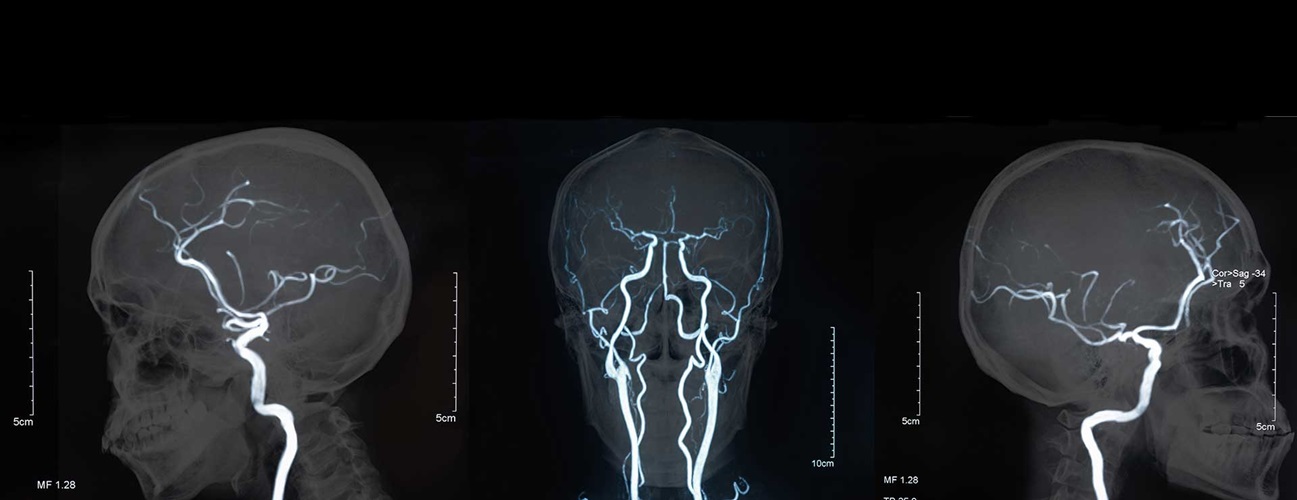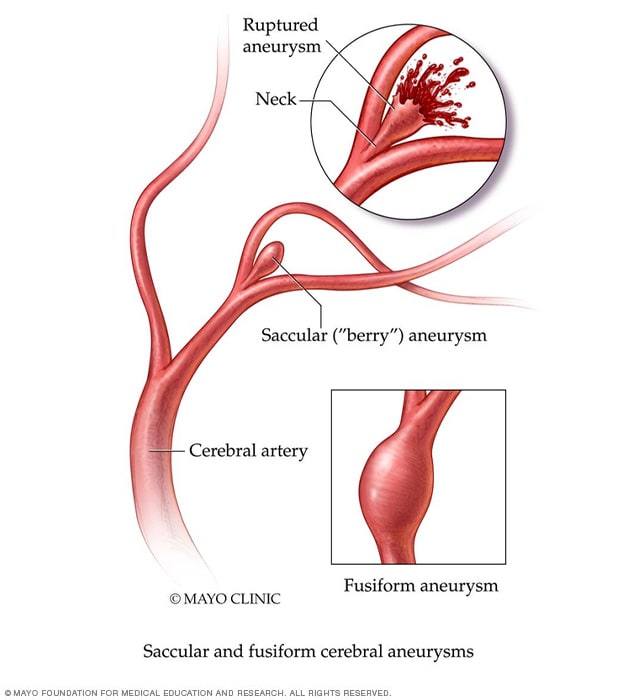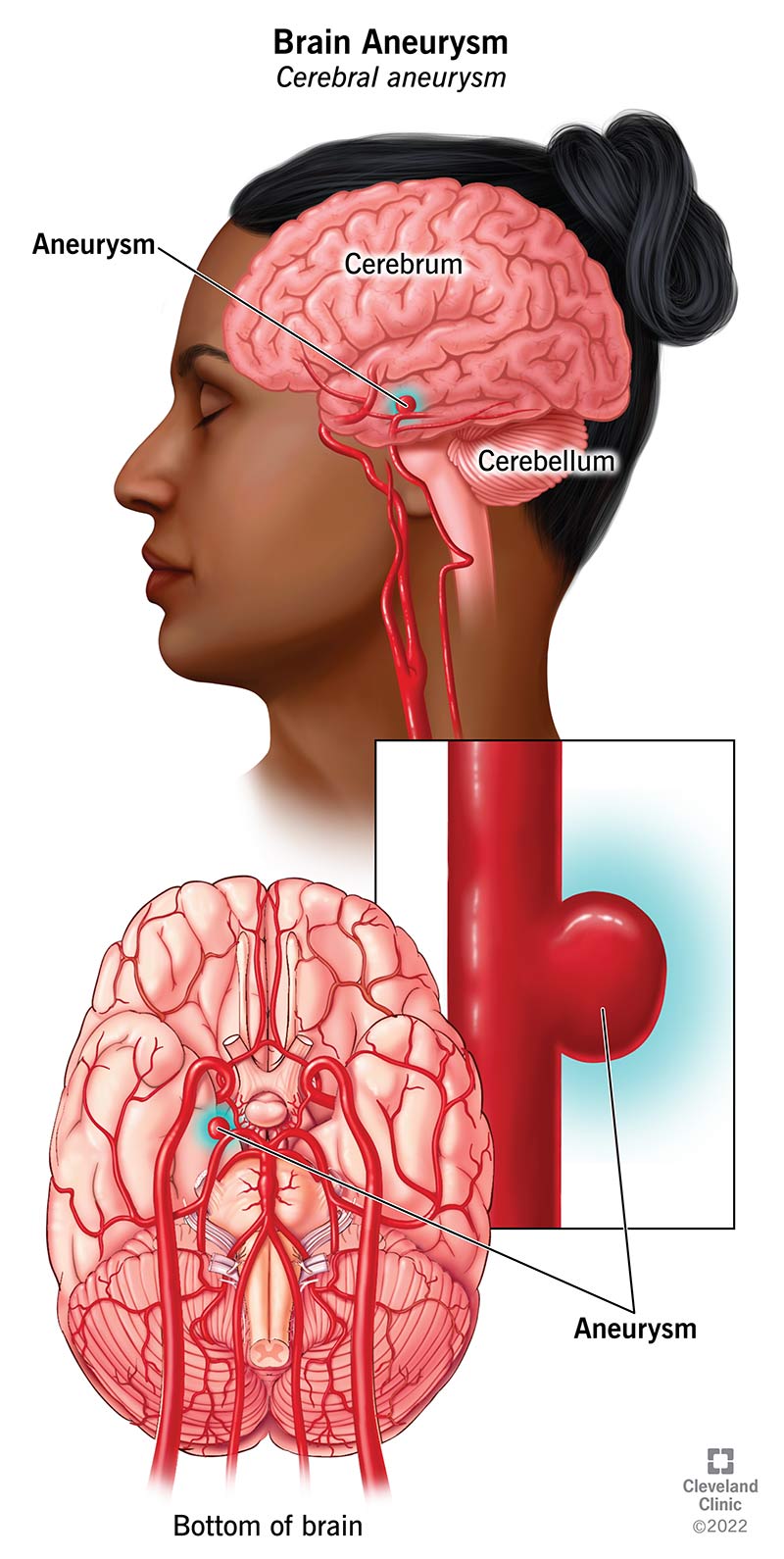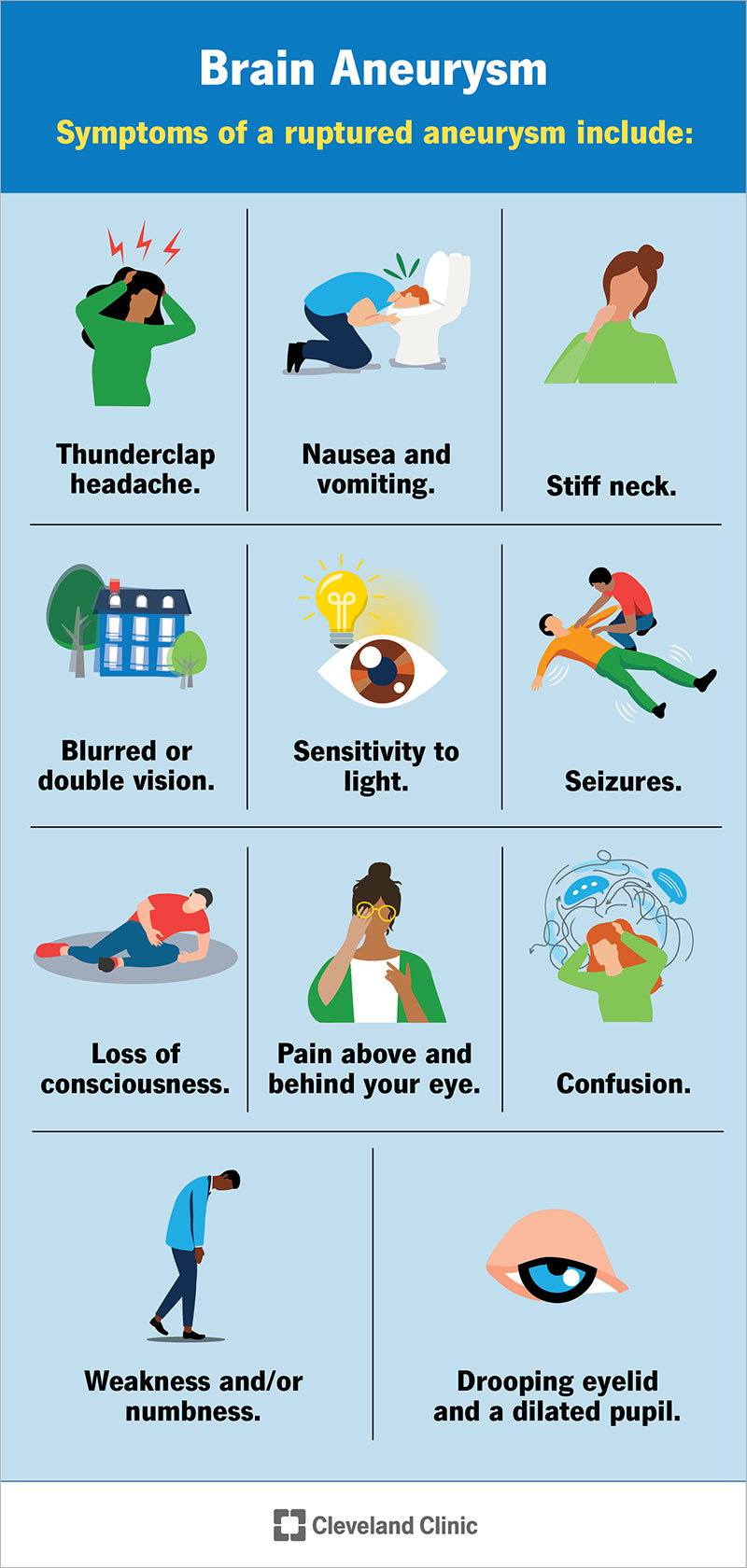Antwort Can you detect an aneurysm before it happens? Weitere Antworten – Would an aneurysm show up in blood work
A Simple Blood Test, Such as Complete Blood Count, Can Predict Calcification Grade of Abdominal Aortic Aneurysm.Most people with aortic aneurysms don't have symptoms unless a dissection or rupture occurs. An aortic dissection or aneurysm rupture is a medical emergency. Call 911 or your local emergency number for immediate help.Once in place, special dye is injected into the arteries of the brain through the catheter. This dye casts a shadow on an X-ray, so the outline of the blood vessels can be seen and an aneurysm can be recognised if one is present. Occasionally, angiography may be done using scans instead of X-rays.
Can aneurysms occur anywhere in the body : Aneurysms can occur anywhere throughout the circulatory system, but most commonly develop along the aorta (the body's main artery that runs the length of the trunk from the heart) and in blood vessels of the brain. Aneurysms are potentially fatal if they rupture. Death can occur within minutes.
When should you suspect an aneurysm
A sudden, severe headache is the key symptom of a ruptured aneurysm. This headache is often described by people as the worst headache they've ever experienced. In addition to a severe headache, symptoms of a ruptured aneurysm can include: Nausea and vomiting.
How do I know if I’m about to have an aneurysm : What Are the Symptoms of a Brain Aneurysm The symptoms of a brain aneurysm can vary based on the type. The most common symptom is headaches but may also include a range of other signs of a brain aneurysm, such as vision changes, numbness of the head, pain above or behind the eyes, and neck pain.
In most cases, an AAA causes no noticeable symptoms. However, if it becomes large, some people may develop a pain or a pulsating feeling in their abdomen (tummy) or persistent back pain. An AAA doesn't usually pose a serious threat to health, but there's a risk that a larger aneurysm could burst (rupture).

Cumulative survival, free from rupture or surgery for acute symptoms, was 96% at 1 year, 84% at 3 years, and 64% at 5 years, where baseline AAA diameters were 5.5–6.9 cm. For diameters ≥ 7 cm, survival, free from rupture, was 65% at 1 year, 29% at 3 years, and 0% at 5 years.
How long can an aneurysm go undetected
People can live with them for years before detection.Symptoms of a ruptured brain aneurysm usually begin with a sudden agonising headache. It's been likened to being hit on the head, resulting in a blinding pain unlike anything experienced before.Up to 6% of people living in the United States have an unruptured brain aneurysm. While still rare, they do happen to up to 30,000 Americans each year. Brain aneurysms occur in both males and females and at any age, but brain aneurysms are most common in female adults between ages 40 and 60.

Symptoms tend to be mild and unnoticeable, but can include:
- Shortness of breath or difficulty breathing.
- Feeling full without eating much.
- Pain at the site of the aneurysm.
- Difficulty swallowing.
- Swelling of the arms, neck or face.
What does a developing aneurysm feel like : The symptoms of a brain aneurysm can vary based on the type. The most common symptom is headaches but may also include a range of other signs of a brain aneurysm, such as vision changes, numbness of the head, pain above or behind the eyes, and neck pain.
How long can you have an aneurysm without knowing : An unruptured brain aneurysm may cause zero symptoms. People can live with them for years before detection.
What happens right before an aneurysm
Most aneurysms are small and don't cause issues. But a ruptured brain aneurysm is life-threatening. The first sign of a ruptured brain aneurysm is usually a severe headache — the worst headache you've ever had. Seek medical care immediately if you have symptoms of a brain aneurysm rupture.

5 warning signs and symptoms that aortic aneurysm might be suspected include: 1) Chest tenderness or chest pain, dizziness or light-headedness, back pain, coughing up blood (hemoptysis) and loss of consciousness due to the ruptures.Ruptured abdominal aortic aneurysm (rAAA) is a vascular surgical emergency, in which 50% of patients die before reaching the hospital, and may carry overall mortality rate of 80–90%.
Can you live with an aneurysm and not know it : Absolutely. Many aneurysms cause no symptoms at all. Some people live for years without knowing they have a brain aneurysm.


